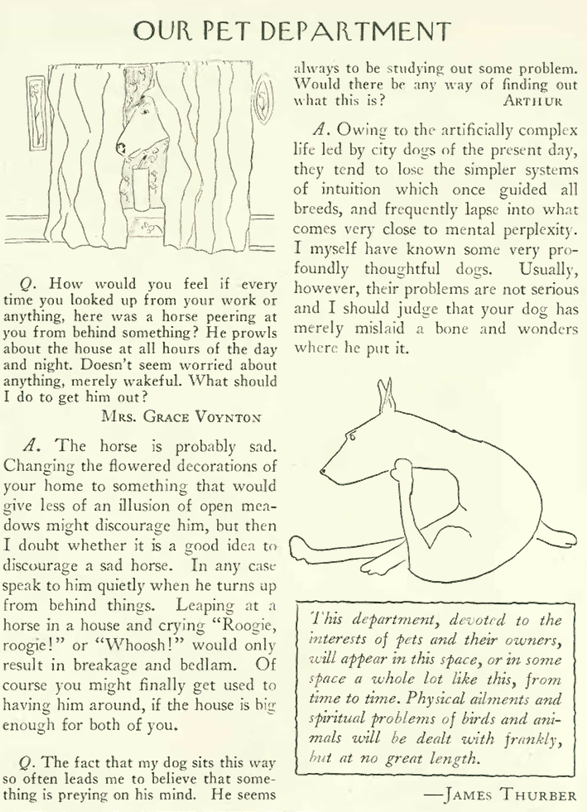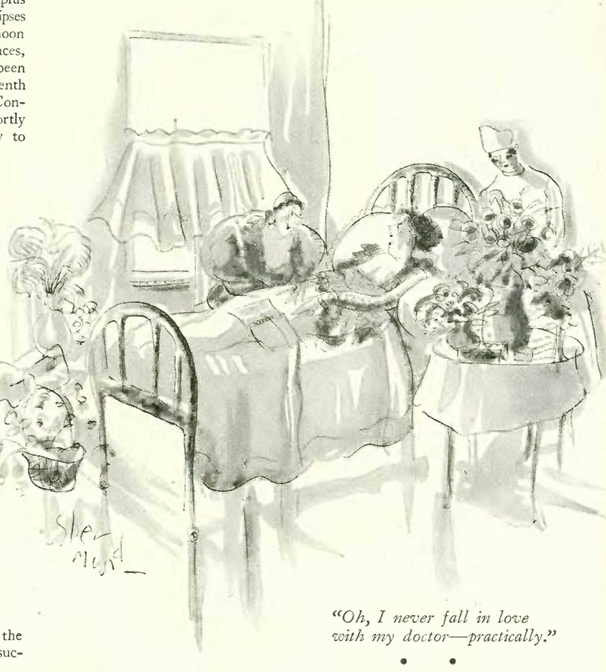The New Yorker had a number of favorite punching bags, among them Grover Whalen (1886–1962), a product of Tammany Hall politics who in 1928 was appointed New York City Police Commissioner by another Tammany alumnus, Mayor Jimmy Walker.

Ironically, a mayor known for openly flouting prohibition laws had placed into office a man who would become known as a ruthless enforcer of those laws (excepting Mayor Walker, of course). Whalen was also known for fighting crimes that didn’t necessarily exist, including those committed by “Reds” organizing protests by the city’s growing numbers of unemployed.
In the May 10, 1930 issue, New Yorker writer Alva Johnston penned a tongue-in-cheek assessment of America’s “Red Revolution” (see previous post). In the following issue (May 17), Morris Markey took a few swipes at Whalen’s “Crimson Menace” in his “A Reporter At Large” column:

Whalen’s career as police commissioner came to an end around the time Markey’s column appeared. Whalen was under fire for how his police responded to an International Unemployment Day demonstration, where 1,000 baton-wielding police went to work on a crowd of more than 35,000 demonstrators. The New York Times reported: “From all parts of the scene of battle came the screams of women and cries of men with bloody heads and faces.”

And in the May 24 issue, E.B. White took his own swipe at Whalen in his “Notes and Comment”…
In ensuing years Whalen found more peaceful pursuits, serving as New York City’s official greeter of dignitaries and organizer of ticker tape parades. In 1935 he was named president of the New York World Fair Corporation and became the face of the forward-looking 1939 New York World’s Fair.

* * *
It’s In The Stars
E.B. White led off his “Notes and Comment” with thoughts on the latest trends in product endorsement, including the use of astrology to boost the sales of toothpaste and perfume:


* * *
More Advice on Troublesome Pets
The May 17 issue featured James Thurber’s latest advice on pet care:
…and this two-page illustration by Reginald Marsh ran along the bottom of “Talk.”
* * *
A Fighter for Rights
The May 17 issue featured the first installment of a two-part profile on social reformer Samuel Untermyer (1858-1940) titled “Little Giant.” The profile’s author, Alva Johnston, praised Untermyer’s legacy, and chided New Yorkers for not giving him his proper due. Known for defending the public trust against powerful corporations, he laid the groundwork in the U.S. for the Federal Reserve Law, the Clayton Anti-Trust Law, the Federal Trade Commission Bill and the Securities and Exchange Act. A fierce defender of Jewish rights, Untermyer served as attorney for Herman Bernstein, who filed suit against automaker Henry Ford for anti-semitic articles published in Ford’s Dearborn Independent.
Johnston concluded his two-part profile with these words:

* * *
From Our Advertisers
Julian De Miskey picked up some extra work with this illustration for Macy’s…
…while in cartoons, Barbara Shermund discovered the challenges of exercise by radio…
…Helen Hokinson looked at another challenge…city driving…
…Gardner Rea explored the mysteries of street food…
…and Peter Arno greeted one Manhattan couple at sunrise…
* * *
On to the May 24, 1930 issue, with a lovely cover by Madeline Pereny…

As construction continued on the Museum of the City of New York, The New Yorker’s architecture critic George Chappell liked what was taking shape:

* * *
From Our Advertisers
Travel by train in the States wasn’t always miserable as this ad attested…
…a bit of color courtesy the Lenthéric salon…
…Fontaine Fox, best known for his long-running Toonerville Folks comics, contributed this cartoon on behalf of Talon Slide Fasteners, or “zippers” as they came to be known in the late 1920s and early 30s, when they were still something of a novelty…
…I believe this is the first-ever image of the Empire State Building in The New Yorker, an artist’s rendering since the building wouldn’t be completed until the spring of 1931…note how this ad links the building’s site location to New York history and specifically the Astor family…
…here is how the Empire State Building looked in June 1930…

…the old Waldorf-Astoria Hotel was torn down to make way for the Empire State Building, and that provides a nice segue to our cartoons…this one by Garrett Price featured a modest work crew contemplating the razing of a building that recalled the old hotel…
…across the pond, one of Helen Hokinson’s ladies was busy trying to procure a banned book…
…while William Crawford Galbraith gave us a young woman in search of a love song (with the help of a seriously timid man)…
…Barbara Shermund found some bedside humor…
…and Peter Arno took us back to the nightlife, with our familiar gold-digger and sugar daddy…
…and finally, over the course of twelve issues (Feb. 8 to May 10, 1930) Abe Birnbaum provided illustrations of New York’s “Restaurant Royalty.” These usually ran in or near “The Talk of the Town” section. Please click to enlarge.
Next Time: The Little King…























